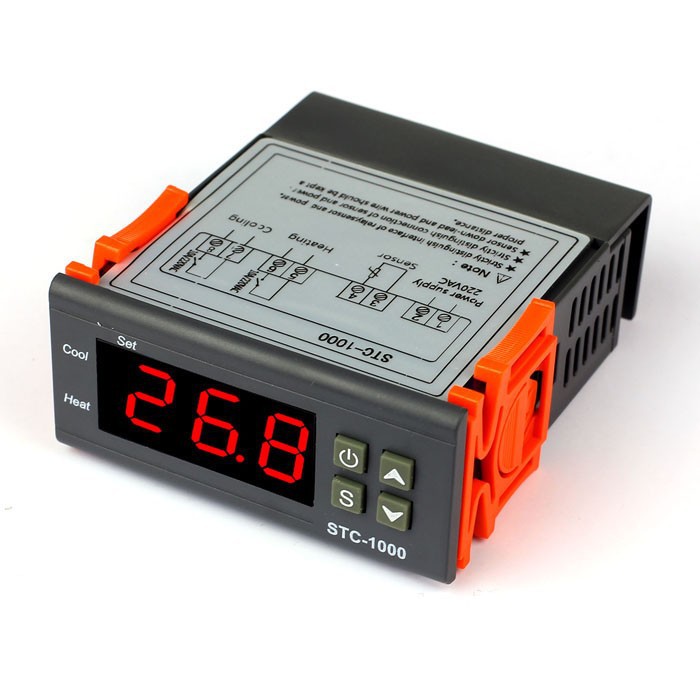Most vaccines need to be stored between +2 and +8 degrees Celsius in order to preserve their efficacy. The gold standard is to purchase a commercial vaccine fridge. You’ll frequently see these at the back of pharmacies or hospitals. The cost of a commercial vaccine fridge is prohibitive for most community family medicine clinics though.
Many family medicine clinics thus store vaccines in regular kitchen fridges. They use frequent monitoring and store large quantities of water (which has a high heat capacity) in the fridge to maintain the fridge at acceptable temperatures.
However, frequent opening of the fridge, the sheer volume of vaccines delivered, and the absence of an accurate temperature controller make temperature maintenance difficult with ordinary fridges. We have thus been experimenting with improved, yet cost-effective, ways of monitoring and maintaining the temperature of our vaccine fridge.
In particular, we’ve been experimenting with a temperature controller unit that is capable of keeping our fridge’s temperature within a smaller and more specific range:
- when the temperature goes above a set trigger, the fridge is turned on full-blast;
- when the temperature goes below a set trigger, the fridge is turned off altogether (by cutting its power).
We experimented with our kitchen fridge for several weeks, and we then deployed it onto our vaccine fridge. We set the fridge to its coldest setting, attached it to the temperature controller unit, and recorded the temperature continuously using a data logger. The temperature ranges of the fridge were tighter with the temperature controller, never going outside a small range of +3.5 to +6.5 degrees.
The parts and instructions on how to make such a temperature controller unit are easily accessible on the internet. There are a variety of how-to videos online that document the process. Total cost of parts can be as low as $60 CDN although we purchased a ready made model with additional software features and regulators for $120 CDN.
A full commercial vaccine fridge would certainly be the optimal solution but our experience is that using a temperature controller is a cost-effective alternative that is already a significant improvement.


